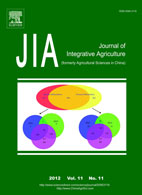|
|
Influence of PPV, PRV and PRRSV on Efficacy of the Lapinized Hog Cholera Vaccine and Pathogenicity of Classical swine fever virus
NING Yi-bao, ZHAO Yun, WANG Qin, FAN Xue-zheng, QIN Yu-ming, ZHANG Guang-chuan, XU Lu, QIU Hui-shen, WANG Zai-shi, SONG Li, SHEN Qing-chun, ZHAO Qi-zu
2012, 12(11):
1892-1897.
DOI: 10.1016/S1671-2927(00)8725
Classical swine fever caused by Classical swine fever virus (CSFV) is a serious problem for swine industries in developing countries, which successful control of the disease have been relying on vaccination. However, classical swine fever still occurs in some immunized swine herds for various reasons. In this study, we conducted animal experiments to examine the influence of single or mixed infection with Porcine parvo virus (PPV), Pseudorabies virus (PRV) and Porcine reproductive and respiratory syndrome virus (PRRSV) on the protective immunity induced by the Lapinized hog cholera virus (HCLV) vaccine and the pathogenicity of CSFV. In experiment 1, pigs were first inoculated with PPV, PRV or PRRSV, then immunized with HCLV, and finally challenged with a highly virulent CSFV Shimen strain. All of the pigs immunized with HCLV survived after the challenge, while all of the pigs in the non-immunized control group died after the challenge. The pigs in the group immunized with HCLV did not show any clinical symptoms of classical swine fever and were negative with CSFV after the challenge. The pigs infected with the non-CSFV before HCLV immunization did not display any clinical symptoms after the challenge with CSFV Shiman strain, but 11 of the 12 pigs were positive with CSFV. In experiment 2, pre-infections with PPV, PRV, and PRRSV were followed by inoculation with a low-virulence CSFV strain (CSFV 39), and then the pigs were challenged with the CSFV Shimen strain. Infections by either PPV, PRV or PRRSV did not enhance the virulence of CSFV-39, but pigs infected by a mixture of the 3 viruses developed clinical symptoms after inoculation with CSFV-39. The mixed infection also increased mortality caused by the challenge with the CSFV Shimen strain. Together, these results showed PPV, PRV and PRRSV infections in pigs can reduce the efficacy of the HCLV vaccine and enhance the pathogenicity of CSFV, which may partly explain the immunization failure against CSFV in some swine herds.
|
